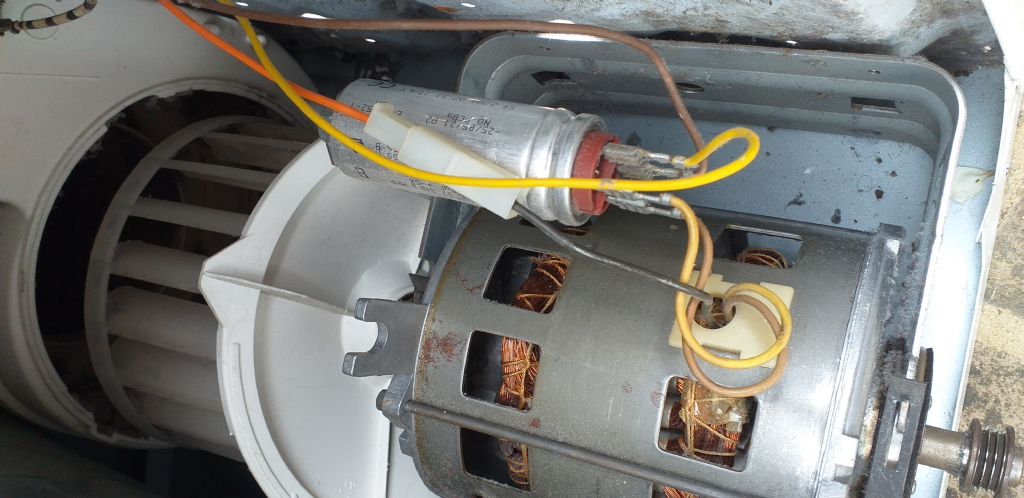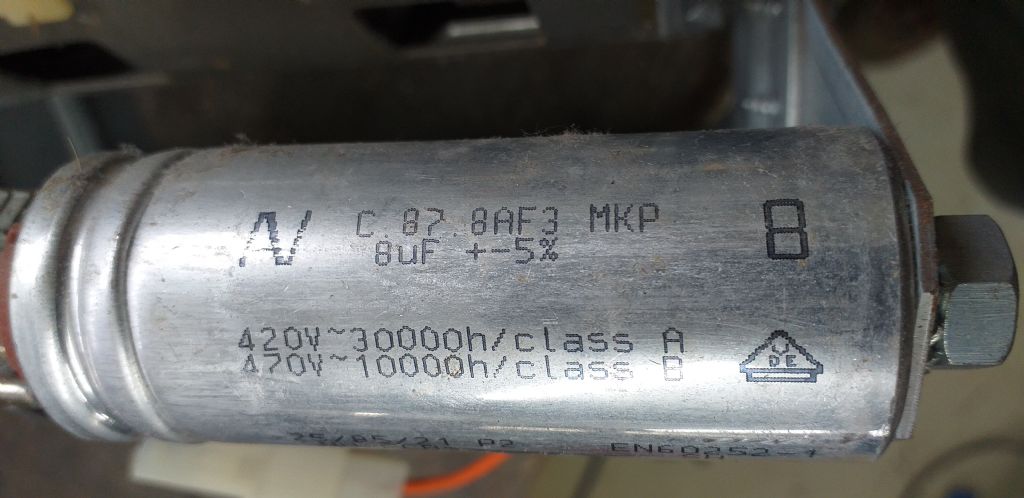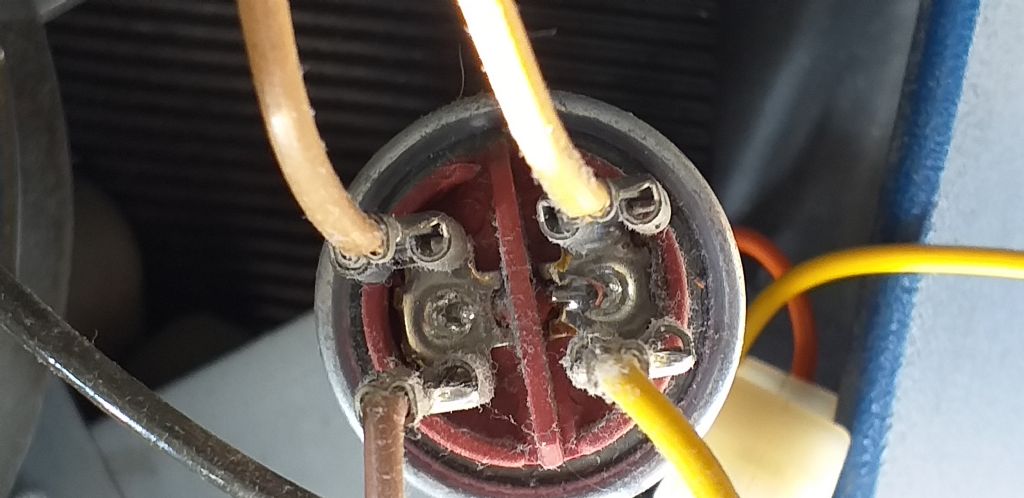Hope I'm not adding to the confusion – there's inconsistent advice in this thread…
The capacitor is, strictly speaking, a run capacitor, in that it is permanently in circuit. The motor almost certainly has two identical windings arranged with one end of each connected together, and brought out as one lead, typically the black one. The other end of each winding is brought out as a lead, and the capacitor is connected across these leads. The identical windings allow the motor to be reversed at will. As has already been said, one wire carrying mains (eg live) is connected to one or other end of the cap, depending on the desired direction of rotation, typically by a change-over switch. The other mains wire (eg neutral) is connected to the winding's common point (the black lead).
You can check this by measuring the resistance between each coloured wire and the black one, and between the two coloured wires (disconnect the cap). I'm assuming the black lead is connected to the two windings' common point. The latter resistance should be twice the former, and the two former resistances should be identical. If that's not the case, it's a single-direction motor, and is wired a little differently – mains across lower-resistance winding (coloured to black), cap across other two coloured wires.
[edited to be even more pedantic…]
Edited By Kiwi Bloke on 06/07/2020 23:07:33
Kiwi Bloke.







